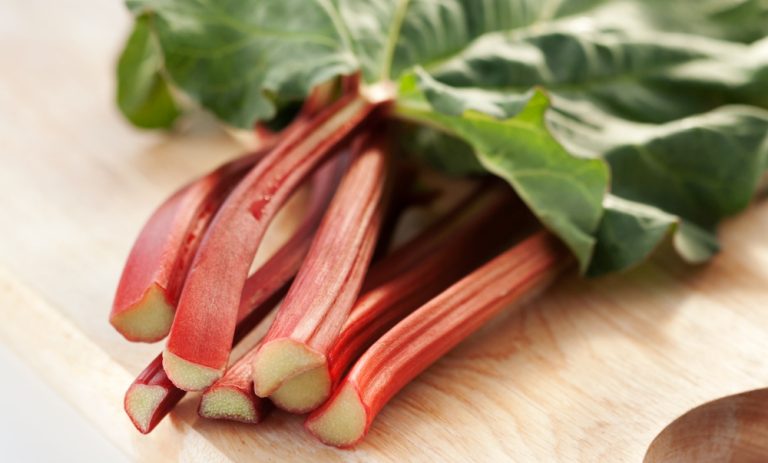Freezing rhubarb is a great way to preserve it and enjoy it out of season. We’ll show you how to do it and whether you have to cook it beforehand.
Rhubarb is in season from early April through June. The rhubarb harvest time is always over far too quickly. Maybe you have a surplus harvest and are looking for a way to preserve the vegetables. Freezing is a good option – we’ll show you how it works.
It’s best to avoid plastic containers and freezer bags when freezing the rhubarb. Screw-on jars are a good alternative. It also makes sense to portion the rhubarb before freezing; so you can thaw and process the right amount later.
Freezing rhubarb: this is how it works

First remove the rhubarb leaves. The leaves are not edible, but you can make plant fertilizer out of them, for example: put the leaves in cold water and let them steep for 24 hours. With the resulting extract you can water your plants and give them valuable nutrients.
Rinse the rhubarb stalks under running water and then drain them.
Cut off the ends with a knife. This is only necessary if the ends are hard. You can usually process fresh rhubarb without this step.
Now you can peel the rhubarb.
Cut the pickled vegetables into chunks. These should be between two and five centimeters long.
At this point you can blanch the rhubarb. However, the investment of time and energy is not absolutely necessary. Blanching preserves the color better, but does not change the taste. The shelf life does not change if you freeze the rhubarb raw.
Layer the rhubarb pieces in screw-top jars. Fill it up to just under the brim and seal it. Label the glasses with the respective date. Then you can store them in the freezer and freeze the rhubarb.
Frozen rhubarb will keep for 10 to 12 months. After defrosting, you can make rhubarb compote or rhubarb crumble, for example.

Tip: If you want to avoid the rhubarb pieces sticking together after freezing, you can prefreeze them: spread the pieces out on plates – they shouldn’t touch each other. Freeze the rhubarb for about an hour and then pour the pieces into glasses. If you have a freezer instead of a small freezer compartment, you can also prefreeze the pieces on a baking sheet or tray.

